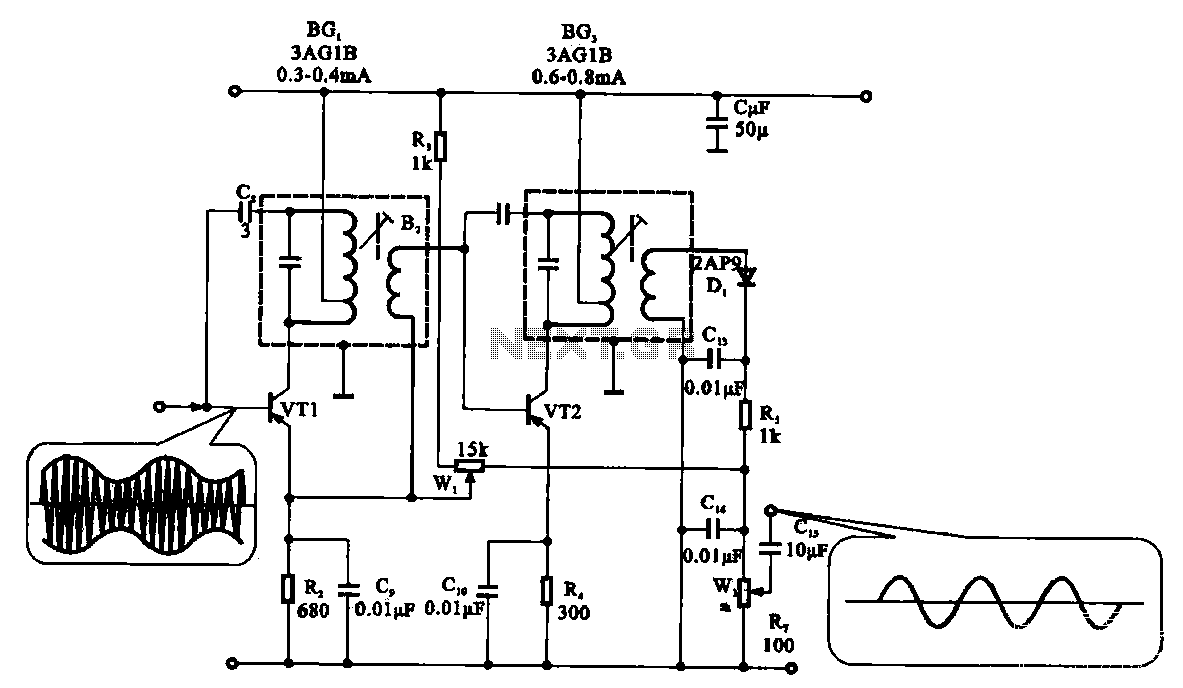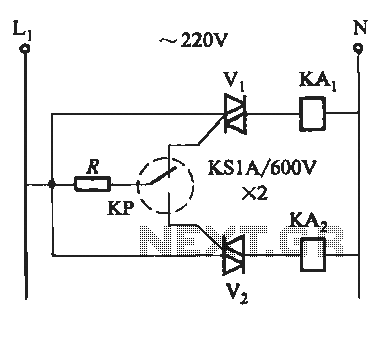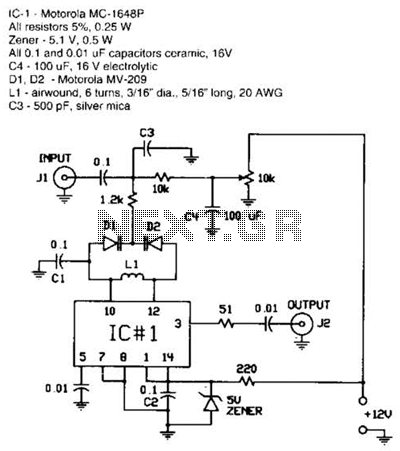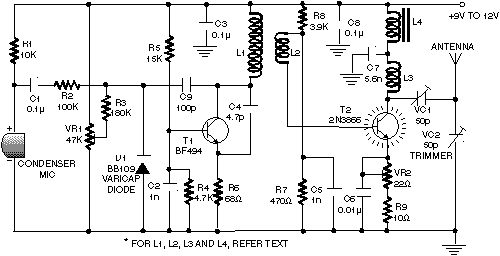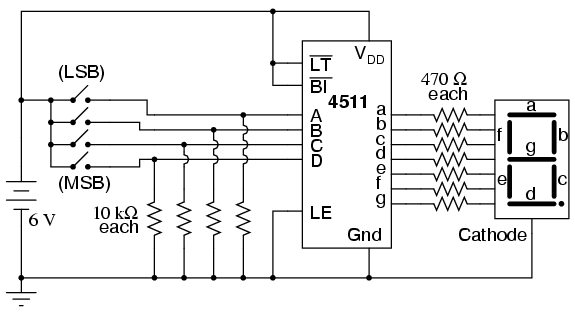
Multitasking Pins circuit
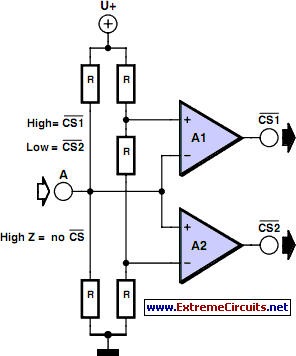
It is entirely logical that low-cost miniature microcontrollers have fewer pins than their larger counterparts, sometimes too few. Consideration has been given to how to economize on pins by making them perform the work of several. It was noted that one could exploit the high-impedance feature of a tri-state output. In this manner, the signal produced by the high-impedance state could be used, for example, as a Chip Select (CS) signal for two integrated circuits (ICs) or as a Read/Write (RD/WR) signal. All that is required are two operational amplifiers or comparators sharing a single operating voltage of 5 V and outputs capable of reaching full low and high levels in 5 V operation, preferably utilizing rail-to-rail output types.
To implement a circuit that utilizes the high-impedance feature of tri-state outputs in low-cost miniature microcontrollers, a schematic can be designed incorporating two operational amplifiers (op-amps) or comparators. The circuit will operate at a single supply voltage of 5 V, ensuring compatibility with common microcontroller logic levels.
The two op-amps will be configured to operate in a way that allows them to share the same output pin while providing distinct functions based on the control signals received. When one op-amp is enabled, it can drive the output to a low or high state, while the other remains in a high-impedance state, effectively allowing the microcontroller to communicate with two separate ICs without requiring additional pins.
The use of rail-to-rail output op-amps is critical in this design, as they can provide output levels that span the entire supply range (0 V to 5 V). This feature ensures that the output signals are compatible with the input requirements of the target ICs, which may require a full 5 V for a logical high state and close to 0 V for a logical low state.
The circuit design should also include appropriate pull-up or pull-down resistors on the output lines to maintain stable logic levels when the op-amps are in a high-impedance state. Additionally, careful consideration should be given to the timing of the control signals to avoid contention between the two op-amps, ensuring that only one is active at any given time.
By utilizing this approach, the overall pin count required for communication with multiple ICs is significantly reduced, allowing for more efficient use of the limited resources available on low-cost microcontrollers. This design strategy exemplifies an effective method of optimizing microcontroller pin usage while maintaining functionality and performance in embedded systems.It s entirely logical that low-cost miniature microcontrollers have fewer ˜legs than their bigger brothers and sisters some-times too few. The author has given some consideration to how to economise on pins, making them do the work of several.
It occurred that one could exploit the high-impedance feature of a tri-state output. In this way the signal produced by the high-impedance state could be used for example as a CS signal of two ICs or else as a RD/WR signal. All we need are two op-amps or comparators sharing a single operating voltage of 5 V and outputs capable of reaching full Low and High levels in 5-V operation (preferably types with rail-to-rail outputs)..
🔗 External reference
To implement a circuit that utilizes the high-impedance feature of tri-state outputs in low-cost miniature microcontrollers, a schematic can be designed incorporating two operational amplifiers (op-amps) or comparators. The circuit will operate at a single supply voltage of 5 V, ensuring compatibility with common microcontroller logic levels.
The two op-amps will be configured to operate in a way that allows them to share the same output pin while providing distinct functions based on the control signals received. When one op-amp is enabled, it can drive the output to a low or high state, while the other remains in a high-impedance state, effectively allowing the microcontroller to communicate with two separate ICs without requiring additional pins.
The use of rail-to-rail output op-amps is critical in this design, as they can provide output levels that span the entire supply range (0 V to 5 V). This feature ensures that the output signals are compatible with the input requirements of the target ICs, which may require a full 5 V for a logical high state and close to 0 V for a logical low state.
The circuit design should also include appropriate pull-up or pull-down resistors on the output lines to maintain stable logic levels when the op-amps are in a high-impedance state. Additionally, careful consideration should be given to the timing of the control signals to avoid contention between the two op-amps, ensuring that only one is active at any given time.
By utilizing this approach, the overall pin count required for communication with multiple ICs is significantly reduced, allowing for more efficient use of the limited resources available on low-cost microcontrollers. This design strategy exemplifies an effective method of optimizing microcontroller pin usage while maintaining functionality and performance in embedded systems.It s entirely logical that low-cost miniature microcontrollers have fewer ˜legs than their bigger brothers and sisters some-times too few. The author has given some consideration to how to economise on pins, making them do the work of several.
It occurred that one could exploit the high-impedance feature of a tri-state output. In this way the signal produced by the high-impedance state could be used for example as a CS signal of two ICs or else as a RD/WR signal. All we need are two op-amps or comparators sharing a single operating voltage of 5 V and outputs capable of reaching full Low and High levels in 5-V operation (preferably types with rail-to-rail outputs)..
🔗 External reference
